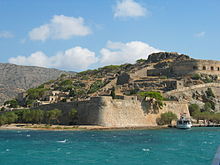
A leper colony, also known by many other names, is an isolated community for the quarantining and treatment of lepers, people suffering from leprosy.
M. leprae, the bacterium responsible for leprosy, is believed to have spread from East Africa through the Near East, Europe, and Asia by the 5th century before reaching the rest of the world more recently. Historically, leprosy was believed to be extremely contagious and divinely ordained, leading to enormous stigma against its sufferers. Other severe skin diseases were frequently conflated with leprosy and all such sufferers were kept away from the general public, although some religious orders provided medical care and treatment. Recent research has shown M. leprae has maintained a similarly virulent genome over at least the last thousand years, leaving it unclear which precise factors led to leprosy's near elimination in Europe by 1700. A growing number of cases following the first wave of European colonization, however, led to increased attention towards leprosy during the New Imperialism of the late 19th century. Following G.A. Hansen's discovery of the role of M. leprae in the disease, the First International Leprosy Conference held in Berlin in 1897 renewed interest and investment in the isolation of lepers throughout the European colonial empires.
The development of modern treatments eliminated the need to isolate lepers as early as the 1940s; scientific arguments against the practice were made in the 1980s.[1] Although Western countries now generally treat cases of leprosy individually on an outpatient basis, traditional isolated colonies continue to exist in India, China, and some other countries.
- ^ Sato, Hajime; Frantz, Janet E (16 March 2005). "Termination of the leprosy isolation policy in the US and Japan : Science, policy changes, and the garbage can model". BMC International Health and Human Rights. 5 (1): 3. doi:10.1186/1472-698X-5-3. PMC 1079837. PMID 15771781.